This comprehensive guide will help you learn the process of assembling a front wheel bearing. In this article, we will focus on wheel bearings, their parts, how they work, and their maintenance. The information contained herein is useful for car enthusiasts, mechanics, or people with a desire to know more about the working mechanism of the wheel bearing, which is critical to the proper functioning of a vehicle. Every aspect of front wheel bearing assembly, starting from the definition of a wheel bearing through diagnosis and replacement of the most common issues, will be discussed. In this way, you would be able to comprehend everything necessary to professionally assemble the front wheel bearing. So, let’s get started and look past the curtain that conceals some of the most important parts of your vehicle’s wheel system.
What is a Wheel Bearing, and How Does it Work?
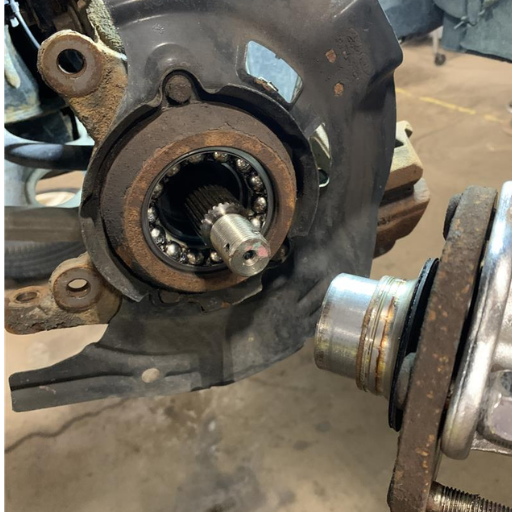
According to the expert, a wheel bearing is an important element in the wheel system of a vehicle. It consists of either a set of rollers or balls that are encased within two metal rings, which are called races. The wheel bearing is located within the wheel hub and the axle, supporting the wheel while also reducing resistance when in motion. Its chief task is allow the wheel to spin while bearing the weight of the vehicle. This is useful in enhancing the vehicle’s handling, stability, and fuel efficiency. Proper lubrication of the wheel bearing is essential to reduce friction and avoid early-onset wear and tear. Rather, the wheel bearing is a very important aspect as it gives the vehicle adequate safety and comfort through the smooth operation of the wheel.
Components of a Wheel Bearing
I am able to elaborate on the various parts of a wheel bearing. These include a number of key components that are crucial to making the wheel spin freely while also providing a support point for the vehicle mass. These components include:
- Outer Ring:The outer ring serves as an exterior or the sencond most place part of the wheel bearing which has the purpose of supporting it in terms of strength.
- Inner Ring: In contrast, the inner ring is said to be the innermost component of a wheel bearing which also has the task of securing the rolling elements.
- Rolling Elements: Rolling elements, which may be ball bearings or roller bearings, revolve around a shaft and enable its effortless turning.
- Cage: The cage which is also known as retainer retains the rolling elements fixing in a certain position and allowing them to roll around freely without forcing or restriction.
- Seals and Shields: Seals and shields protect the bearing and help in the retention of lubricant which would help in improving the life span of a wheel bearing.
Overall, these elements operate together to bear the weight of the wheel, reduce the friction involved, allow their rotation motion, and thus offer a safe and comfortable ride.
How Bearings Allow for Smooth Rotation of the Wheel
bearings enable the wheel to rotate smoothly by minimizing friction between the rolling elements and the stationary parts. When the wheel is turned, it rolls over retainer balls or rollers that are located around the inner and outer races of the wheel and assembly, thereby increasing the ease with which the wheel turns. This, in turn, reduces the heat created and guarantees that the rotational forces are delivered efficiently, thus enhancing comfort during movement. Moreover, the incorporation of seals and shields in design serves to keep out debris thus ensuring that bearings work effectively and for a longer period.
The Role of Lubrication in Wheel Bearings
You should know that lubrication of wheel bearings is critical if you are an expert in the industry. Proper lubrication is a key determinant for the efficiency and lifetime reliability of wheel bearings. Depending on how well the rolling elements’ bearings are lubricated, work performed, and heat generated by the wheel’s rotation could be much less – all thanks to reduced friction between rolling elements and inner and outer races. Also, well-done lubrication prevents corrosion and disintegration of bearing parts, thus contributing to their functionality for a long time. It is necessary to lubricate regularly in order to restore the condition of wheel bearings and extend their operational life.
How to Identify Symptoms of Bad Wheel Bearings?
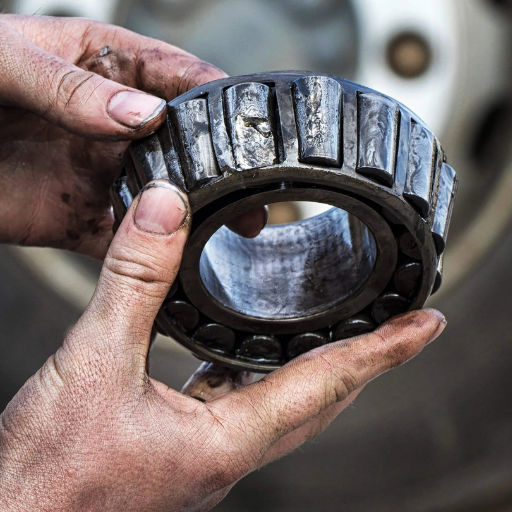
It is crucial for you to know the symptoms of defective wheel bearings. The safety and performance of your vehicle largely depend on this. Here are a few signs of such failures that you should specifically watch out for:
- Unusual Noise: The presence of loose, snarling, grinding, or rumbling noise that persists while the vehicle is in motion is one of the most common reasons for a faulty wheel bearing. With this type of noise reported, it is normal to expect that an increase in the vehicle’s speed or making turns will worsen the sound.
- Uneven Tire Wear:Cracked bearings or a poor bearing assembly can also be a reason for the uneven wear patterns that are visible on the tires. So if excessive wear is observed on one side of the tire or there are weird patterns on the surface of the tires, then it serves as a clear indication of a damaged wheel bearing.
- Steering Instability: Loss of responsiveness, enfeeblement or undoing of the steering is another Type of steering problem, caused by poor or damaged wheel bearings. In case there is a problem with the drive shaft or a constant shaft, the driver would have trouble driving in a straight line.
- Vibration and Shaking: One of the most overt signs of a worn-out bearing assembly on the tires is the vibration, especially at high speeds. With worn-out bearing assembly, the shaking of the wheels becomes apparent.
- ABS Warning Light: The ABS warning signal on the dashboard light may also come on due to the malfunctioning of the wheel bearings. This is a crucial indicator as it shows that the rim bearings have developed issues, and as a result, the rim speed regulator has also been affected.
When you notice any of these indicators, it is important to check for any damage in your wheel bearings and replace them when needed. Dismissal of such warning signs can eventually lead to more serious damage, which can put the safety of the vehicle and the passengers at risk. This is because timely service and the necessary replacement of parts will always ensure the good condition of your wheel bearings.
Common Symptoms of Bad Wheel Bearings
Let’s now focus on the symptoms you can observe and ascertain if you have a bad wheel bearing, considering yourself as an expert in the field. Remembering these signs will allow you to resolve any issues before they escalate, thus enhancing the safety and performance of your vehicle. These signs include:
- Unusual Noises: A distinct sign of failing wheel bearings is a grinding, humming, or rattling noise made by the wheels. This sound is usually more noticeable when cornering or driving at speed.
- Vibration:
- When wheel bearings begin to fail, vibrations might be felt in the steering wheel, in the floor, or even in the seat of the car. These vibrations can be due to a wheel that is not spinning properly because of worn out bearings.
- Also, a vibrating sensation while braking is suggestive of a problem within the wheel bearings as well.
- Uneven Tire Wear: Increased or uneven wearing of the tire is attributable to faulty wheel bearings. If you note an increased wear of the tires or an uneven wear, this may suggest that the wheel bearings are preventing the wheels from turning freely.
- Wandering or Pulling: Wandering A car with faulty wheel bearings may appear to be loose and wander or pull to one direction while being driven. The reason for this is the poor weight distribution and poor wheel rotation.
- ABS Light Activation: In some scenarios, a dysfunctional wheel speed sensor which is associated with the wheel bearings could set the ABS warning on a vehicular dashboard.
The worn-out bearing can transfer the issue to other components; therefore, if you experience any of such peculiarities, it would be important to have the wheel bearing checked and, if needed, changed. These symptoms should not be neglected, otherwise it may lead to severe problems and threaten your safety. As far as managing the integrity and functionality of the wheel bearing is concerned, it is all about maintenance, and if that is not sufficient, repair needs to be done immediately.
Signs of a Faulty Wheel or Hub Assembly
I will attempt to answer the following questions: What are the indications of a defective wheel or hub assembly? As a rule, watch out for the following signs:
- Uneven tire wear: Excessive wear on one side of the tire indicates a technical concern on the wheel and hub assembly.
- Unusual noises: Strange grinding, humming, growling sounds while the vehicle’s moving, which can indicate a defective wheel bearing.
- Vibration or wobbling: Any vibration or wobbling while driving might suggest damage to the wheel or the hub assembly
- Loose steering: The wheel on the rim can loose or become unstable hence lead to failure on the wheel or the hub assembly.
- ABS light: Illuminating the ABS light on the dashboard can indicate wheel malfunctioning with the hub assembly.
In case you notice some of the signs outlined above, it is advisable to check your wheel or hub assembly and replace it if needed. If such signs are ignored, permanent damage may result together with jeopardizing the safety of your car. In order to keep the wheel bearings and hub assemblies in reliable and serviceable conditions, frequent maintenance and scheduling are required, and effective repairs are made as required.
Diagnosing a Bad Wheel Bearing
There are some symptoms that need to be considered when considering wheel bearing failure or malfunction. Typical signals warning of an impending failure may include the following:
- Unusual Noise: A persistent noise like humming, grinding or rumbling, usually accompanies a motion of the vehicle, and it indicates a bad wheel bearing. This noise may be increased or may change its frequency while cornering.
- Vibration and Uneven Tire Wear: A bad wheel bearing can also be responsible for some vibration or shaking of the steering wheel, steering column, floorboard, or the seat. Additionally, it will cause uneven tire wear patterns where the entire tire tread wears out but not evenly; some parts wear out faster.
- Excessive Wheel Play: Excessive play in the wheel or loosness is also overheard whilst bearing is a failing one. In this situation, a wobbling sensation is noticed while driving the vehicle.
- ABS or Traction Control Light Activation:In some cases, the wheel Bearing does not work properly and this puts several functions of the vehicle at risk. For instance, the ABS (ABS stands for Anti lock Braking System) will be triggered along with the traction control system causing the dashboard warning lights to illuminate.
In the event you see any such sign, it is recommended to have your wheel bearing concerning a qualified technician. Quick response can help avoid other related problems and also safeguard the vehicle’s performance.
Differences Between Ball Bearings and Roller Bearings
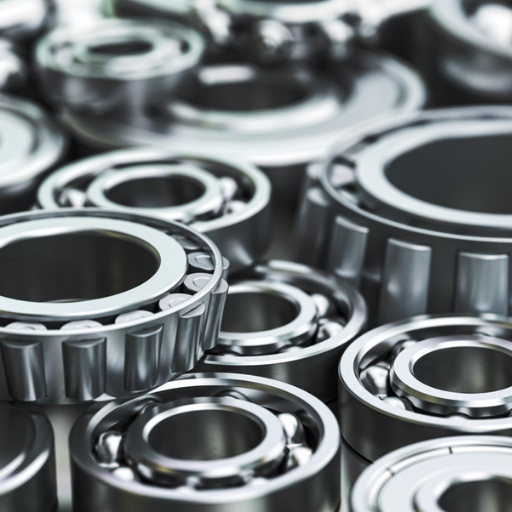
Working as an industry expert, let us go into the details of the difference between ball bearings and roller bearings:
- Design and Construction: Ball bearings have rolling elements that are spherical in shape, usually in ball form, placed in between two rings. That simplification allows for smooth,low-friction operations. In contrast, roller bearings consist of rollers shaped as cylinders or tapered, are suitable for higher loads, and have better resistance to misalignment.
- Load Capacity: Roller bearings have greater load-holding capabilities and usually find application in situations requiring higher radial or axial load pressures. Ball bearings, which would still be capable of aiding a high load, would be more effective in lower load applications where speed is of primary concern.
- Friction and Efficiency: One of the advantages of ball-type bearings is that there is reduced friction because of point contact between rolling elements and rings. Hence less energy would be expended resulting in higher efficiency, these would be suitable for application in which power loss would be paramount. On the contrary, roller bearings would have larger contact surface area hence higher friction but would excel in the application of heavy load distribution.
- Speed and Accuracy: Ball bearings are point contact type bearings With this system ball-bearing types of machines would be able to run at high speeds whilst maintaining a good degree of rotational accuracy, ball bearings isolate the parts allowing smoother operation. Roller type of bearings is a line contact type and is designed for applications with high load capacity and high stability requirements.
- Applications: Ball bearings are used in almost every industry including automotive parts, domestic appliances and littler machines. Used in construction industry, mining, and heavy machinery industries, roller bearings can bear bigger loads and can last in more rigorous conditions.
The selection of the right bearing for particular applications is dependent on a clear understanding of the differences between ball bearings and roller bearings. Load capacity, speed, and the operating environment are examples of factors that influence the usefulness of one type of bearing compared to others.
Understanding Ball Bearings and Their Uses
It is imperative for every industry specialist to appreciate the concepts of ball bearings and their applications when it comes to choosing the most effective bearing for any given situation. Due to their capacity to bear heavy loads and operate under extreme conditions, ball bearings are applicable in the construction, mining, and heavy machinery industries. They are made up of steel spheres that are located in a raceway between the outer and inner rings. The movement of the balls between the rings causes rolling and reduction of friction, which results in easier operation and energy savings. Some ball bearings are used in a number of applications, including automobile parts, electric motors, and many industrial machines that need high-speed rotation and controlled movement. Suitable for wide applications due to their great load capabilities, very low friction,n and high endurance under conditions where performance and reliability are critical.
The Advantages of Roller Bearings
a few merits are more salient with the use of roller bearings than with other bearings. These are:
- Higher Load Capacity: Roller bearings can withstand a constant load better than ball bearings. Because of the greater contact area of the rollers with the inner and outer rings of the bearing, there is better weight distribution and this makes it possible for them to be used in high carrying load applications.
- Enhanced Radial Load Support: The unique feature of roller bearings is that they can withstand radial loads more effectively. Radial loads are forces acting along the line which is perpendicular to the shaft axis. The cylindrical or tapered shape of the rollers aids in load concentration and helps the bearing operate without excessive load and provides the best conditions for loading the bearing.
- Increased Rigidity: Due to the larger contact area and a larger number of contacts, roller bearings provide greater rigidity. Precise movement in applications is possible with roller bearings, accompanied by the ability to resist deformation under very high loads.
- Better Shock and Vibration Resistance: Compared to other kinds of bearings, roller bearings are able to withstand both shocks and vibrations more efficiently because of their outer design. Such features are very important in instances where smooth operations are critical such as in automotive parts and machines in industries.
The utilization of these benefits allows roller bearings to deliver consistent and effective power transmission with uninterrupted operation and durability for various tough applications.
Choosing the Right Bearings Like for Your Vehicle
For you, it’s needless to say that selecting bearings for a vehicle is paramount in order to maintain operational efficiency and safety. For the most thorough selection of bearings, consider the following points:
- Application Requirements: Determine the application parameters of the bearing including but not limited to the maximum load, speed, and working environment. This will guide the choice of the design, dimensions and material of the bearing.
- Durability and Reliability:Inquire into the type of bearings that provide extreme usage for your type of vehicle and have long-lasting performance.
- Compatibility and Fit: Verify if the recommended bearings will fit with the make and model specifications of your car. The bearings are critical for apex performance and longevity and thus need to be installed accurately.
- Quality and Brand Reputation:Examine different brands of bearings and purchase those that are manufactured by established firms. Most trusted manufacturers have met the industry standards after going through the necessary tests which gives their customers confidence.
Taking these aspects into account enables you to select the most appropriate bearings for your vehicle which will improve its performance, efficiency as well as safety.
How to Replace a Bad Wheel Bearing Safely?
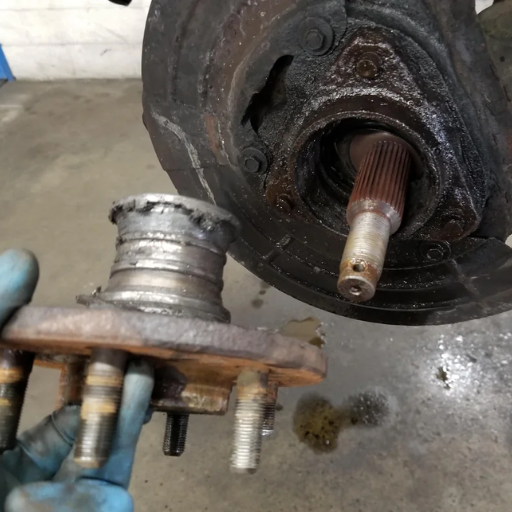
As a subject matter expert, replacing a faulty wheel bearing is safe as long as the process is followed. Below are the stepwise procedures to effectively and safely replace a faulty wheel bearing:
- Safety First: Always remember to secure the vehicle properly and place it on jack stands. In addition, proper gloves and eye protection should also be used.
- Remove the Wheel: The first task is to take the wheel off and also to loosen the lug nuts prior to lifting the vehicle.
- Unbolt the Brake Caliper: Proceed to take off the brake caliper and place it aside till the job is done making sure the brake line does not get damaged.
- Remove the Rotor: Gently slide the rotor off and take care not to damage any of the brake components in the process.
- Disconnect ABS Sensor (if applicable): Prior to going any further, if there is an ABS sensor located on the hub assembly of your vehicle it has to be unplugged first.
- Remove the Axle Nut: Using a suitable tool, remove the axle nut and keep it in a safe place.
- Remove the Wheel Bearing Hub Assembly: Note that the wheel bearing hub assembly can be either bolted in place or pressed into it. Please ensure the manufacturer’s guidelines are strictly adhered to when removing it.
So long as you follow such methods and the mentioned precautions, you can safely change a faulty wheel bearing, allowing you to make your vehicle safer and more dependable. In any case, in case of indecision or lack of willingness to perform the replacement on his own, it is advisable to contact prof.
Tools Required for Wheel Bearing Replacement
I can put together this short and concise checklist with the basic agricultural equipment needed when replacing a wheel bearing;
- Jack and Jack stands
- .Lug wrench
- Socket set
- Torque wrench
- Breaker bar
- Hammer
- Pliers
- Screwdrivers (flathead and Phillips)
- Grease packer or brush
- Bearing packer or bearing grease
- Brake cleaner
- Anti-seize compound
Access to these tools will certainly guarantee the flawless process of wheel bearing replacement.
Troubleshooting Common Issues During Installation
From my experience, I can suggest troubleshooting steps for some common problems that may occur when fitting new bearings into the wheel hub:
- Improper Installation: The wheel bearing must be secured and installed according to the procedures given by the manufacturer. Otherwise, a loose-fitting bearing will create noise and vibration and wear out earlier than expected which is troublesome.
- Excessive Play or Tightness: Checking the bearing in the wheel for excess or tightness in the amount of play is important. When there is too much play, it can create wobbling in the wheels while tightness causes overheating which again damages the bearing.
- Lack of Lubrication: Proper lubrication increases the chances of a wheel bearing getting operated smoothly without any mechanical fault. A lubricant that is recommended must be used and evenly spread throughout the working surfaces of the bearing at the time of assembling.
- Contamination: To avoid contamination – chemicals, dirt, or moisture around the wheel bearing area must be dry before the installation as they delay a greater performance and durability of the bearing.
- Seal Integrity: Be sure to examine the wheel bearing seals and their condition as well. Entering pollutants will affect the performance of the bearing if the seals are damaged or worn out.
In case you run into any complications during the installation procedure or you are unclear about any part of the process, it is advisable to call in a technician. They possess the know-how and the proper skills to assist you in replacing the wheel bearings in a great way.
Maintenance Tips for Extending Wheel Bearing Life
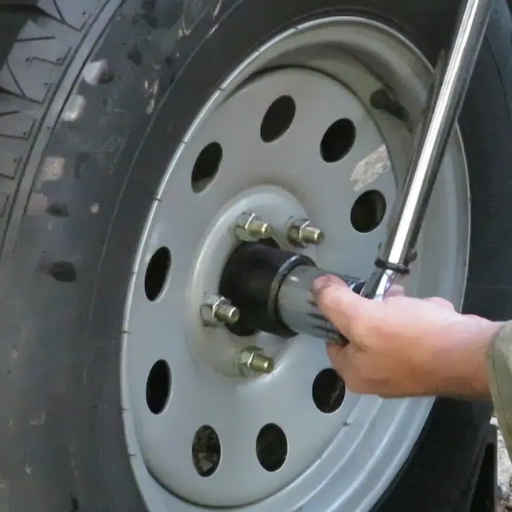
I am giving these tips on maintenance so that the wheel bearings can last longer:
- Regular Lubrication Practices: These are important for the effective functioning and the life span of the wheel bearing, grease, or lubricants. As the wheel assemblies are mounted, there is a requirement and the need to follow the manufacturer’s lifetime sealers and gaskets to spread lubricants evenly across all the bearing surfaces. Follow these guidelines regularly to ensure optimal performance of wheel bearings, providing periodic inspection and lubrication as directed by the manufacturer.
- Inspecting Wheel Bearings for Wear and Tear: Make sure you carry out some regularly planned inspections looking for any red flags in your wheel bearings, for example, if there are any strange sounds or the bearing is vibrating or has a free play exceeding expectations. Also, keep an eye out for the seals for any kind of loss or deformation. If you do come across anything that seems out of place take appropriate actions in order to prevent your vehicle from becoming unsafe to drive.
- When to Seek Professional Help: Professional Assistance is Just One Call Away: In case you come across any hurdles while you are fixing the wheel bearings or feel uncomfortable about fixing a part on your own, then call a technician. It is wise to take such actions in order to avoid any unwanted issues. Technicians are professional and trained in these settings which will help in making sure that any wheel bearing replacement is done in a dependable manner without exposing you to any potential risks in the future.
Нe recommendations above and the preventive measures taken caring about your wheel bearings will help increase their service life, provide high functionality, and add safety and reliability to the vehicle as a whole.
Regular Lubrication Practices
Timely lubrication of wheel bearings is critical to ensuring their satisfactory and reliable operation in the long run. It actually helps in minimizing friction and wear which in turn increases their life span. Use of right lubricants for a given type of wheel bearings at the correct intervals as per the instructions of the manufacturer is suggested. If these actions are undertaken routinely, the performance of wheel bearings can be sustained, and damage and wear can be avoided.
Inspecting Wheel Bearings for Wear and Tear
it is vital to monitor your wheel bearings for cases of deterioration on a regular basis. For example, pay attention to the following factors that may indicate trouble with your wheel bearings:
- Unusual Noise: Look out for odd sounds from the wheels that could range from grinding, clicking or humming. These sounds may suggest that the wheel bearings are worn out, damaged or even broken.
- Uneven Tire Wear: Maintain a check on the tire treads. The faulty wheel bearings can determine the car tires wearing pattern through worn edges that are either inside or outside the tires.
- Vibration or Steering Instability: While operating the vehicle, if the driver feels vibrations, or while driving the steering wheel pulls on one side of the vehicle, the cause possibly is a broken or damaged wheel bearing.
- Excessive Play or Movement: While the car is elevated, attempt to shake the wheel from the left towards the right. As one notices excessive play or movement in the steering wheel, chances are quite high that the wheel bearing is probably damaged or loose.
Should you witness any of these signs, getting in touch with a certified technician is encouraged. They’ll be able to inspect the issue in detail, give a correct assessment of the situation, and work on it as required. This will help you in maintaining your car safely and dependably.
When to Seek Professional Help
it is also essential to understand when to consult with a professional for wheel-bearing concerns. If you observe abnormal indications such as strange sound, uneven wear in wheels, movement and shaking of the steering wheel, or excessive spinning of the wheels, it is suggested that you get in touch with a competent technician without delay. Resolving these signs or even trying to resolve the issue by yourself could cause further damage and also put the safety of the vehicle at risk. Professionals will be trained enough to identify the problem accurately, attempt to fix it or replace it where necessary, and thus make the vehicle top in performance aspects and safe to drive. Remember to consult with an industry professional if you have any issues regarding wheel bearings, and do not leave it for later continuity.
Reference
- Hagerty: Step-by-step instructions to replace your car’s front wheel bearings
- WikiHow: How to Change Wheel Bearings
- Goodhood: DIY Guide – How to Replace Your Car’s Wheel Bearings
Frequently Asked Questions (FAQs)
Q: What is a front wheel bearing assembly?
A: A front wheel bearing assembly is a crucial component of a vehicle’s suspension system that connects the wheel to the axle, allowing for smooth rotation and handling of radial and axial loads.
Q: How do I know if my wheel bearing assembly needs to be replaced?
A: Indicators that your wheel bearing assembly needs to be replaced include unusual noises like grinding or humming, vibrations applied to the wheel, or uneven tire wear. It’s critical to be certain that the wheel bearing is the issue before proceeding with replacement.
Q: What are the different types of bearings used in a wheel bearing assembly?
A: The most common types of bearings used in a wheel bearing assembly are ball bearings and roller bearings. The selection of wheel bearings depends on the design and intended use of the vehicle.
Q: How are modern wheel bearings installed in the hub?
A: Modern wheel bearings are typically press-fit into the hub and must be installed in the hub using specialized tools like a puller to ensure proper fit and alignment.
Q: Can wheel bearings last forever?
A: Although wheel bearings are designed to last a long time, they do not last forever. They must be lubricated and maintained properly to avoid premature wear and failure.
Q: What role does a ball joint play in relation to the wheel bearing assembly?
A: The ball joint is part of the suspension system that works alongside the wheel bearing assembly to provide stability and safety, enabling the wheels to move up and down while steering.
Q: How do I find the right front wheel bearing for my vehicle?
A: To find the right front wheel bearing for your vehicle, refer to the vehicle’s manual or consult with a professional mechanic. It’s important to ensure compatibility with your vehicle’s make and model.
Q: What tools are necessary to replace a front wheel bearing assembly?
A: To get the job done, you may need tools such as a puller, socket set, torque wrench, and a mallet. The specific tools required can vary depending on the design of the vehicle’s wheel end.
